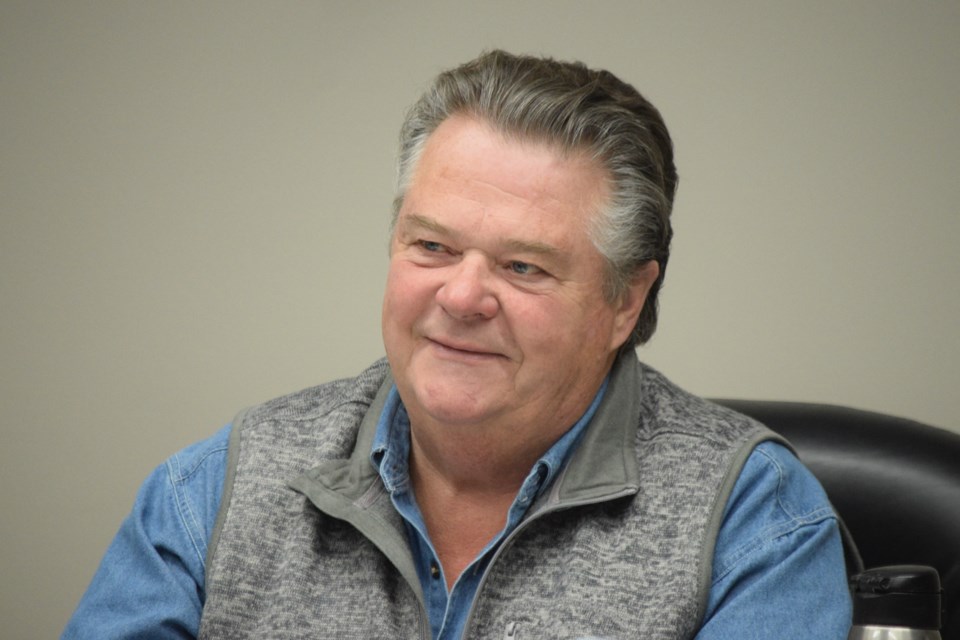BARRHEAD - The County of Barrhead hopes to access provincial money to repair or replace four bridges.
Councillors authorized the municipality to apply for an estimated $1.125 million in Strategic Transportation Infrastructure Program (STIP) grants.
The province created STIP to help municipalities solve their infrastructure deficit, boost the economy, and create jobs as part of its pandemic economic response. The program allows municipalities to receive roughly 75 per cent of the funding for approved infrastructure projects.
Infrastructure director Ken Hove said public works inspect bridge and culvert structures annually in 57-month or fewer cycles, adding the identified four structures with low-rating advisories and required repairs or outright replacement.
The first bridge project they hope to receive STIP funding is in the Camp Creek area on Range Road 45.
"That is the road we reconstructed last year," he said. "The bridge spans Camp Creek itself and has failing elements."
The province denied STIP funding for the two-span bridge, constructed in 1958, last year. In the municipality's 10-year capital plan, it was slated for significant repair work in 2025.
"We seem to have trouble getting funding because, overall, the bridge has good condition ratings as its superstructure is in good shape, but its substructure is poor," Hove said. "They just seem to look at [a bridge's total condition rating], which is a bit high, but [the province] said they would increase STIP funding, so hopefully they will include some of these repairs."
The request for decision (RFD) notes that the bridge needs several piles and caps replaced. The project's total cost is estimated at $240,000, with the county's cost pegged at $60,000.
The next structure the county identified was a culvert, also constructed in 1958, on Range Road 35 south of Highway 654.
"It's an arch culvert now," Hove said. "The floor has completely rusted away, and the risk of failing is quite high."
The projected replacement cost is $540,000, which would only happen sometime in 2026 as engineering work still needs to be completed.
The next bridge structure Hove said public works identified for replacement is another culvert west of the Mooseswallow gravel pit.
"It is a wooden culvert [constructed in 1965] and is in very poor condition," he said. "The wood is starting to rot and fail, and it is getting close to that 28 per cent when it is prone to possibly collapsing."
Like the previous culvert, replacement is slated for 2026, as the preliminary engineering work is not expected to be complete until sometime in 2025.
The last structure the county identified for a significant upgrade is a single-span bridge over Newton Creek, about five kilometres north of the Dunstable transfer station.
"That's a bridge with very poor elements in the substructure underneath," Hove said.
The RFD identified rolling abutment caps, rot in the piles, girders that have punchouts, and cracking and spalling near posts.
As with the other projects, the work, estimated at $180,000, was included in the municipality's 10-year capital plan, with repairs scheduled to occur in 2026 after the engineering is completed.
Coun. Paul Properzi asked if the municipality could change Newton Creek Bridge to a culvert.
"You could, but it would be even more expensive," Hove replied. "The cost of replacing a culvert is increasing, upwards of $500,000."
Reeve Doug Drozd asked if any bridges or culverts served fish-bearing creeks.
Hove said Newton Creek is definitely fish-bearing, and the one near Mooseswallow would also likely be considered so by the province, given its proximity to the Athabasca River.
"Any of our major creeks have that potential, and if they've had fish in the last 100 years, the [province] considers them able to bear fish, and you need to have the proper permitting. That is what happens during the engineering portion. It concerns hydrology to ensure the right-sized culvert is installed."
Barry Kerton, TownandCountryToday.com



